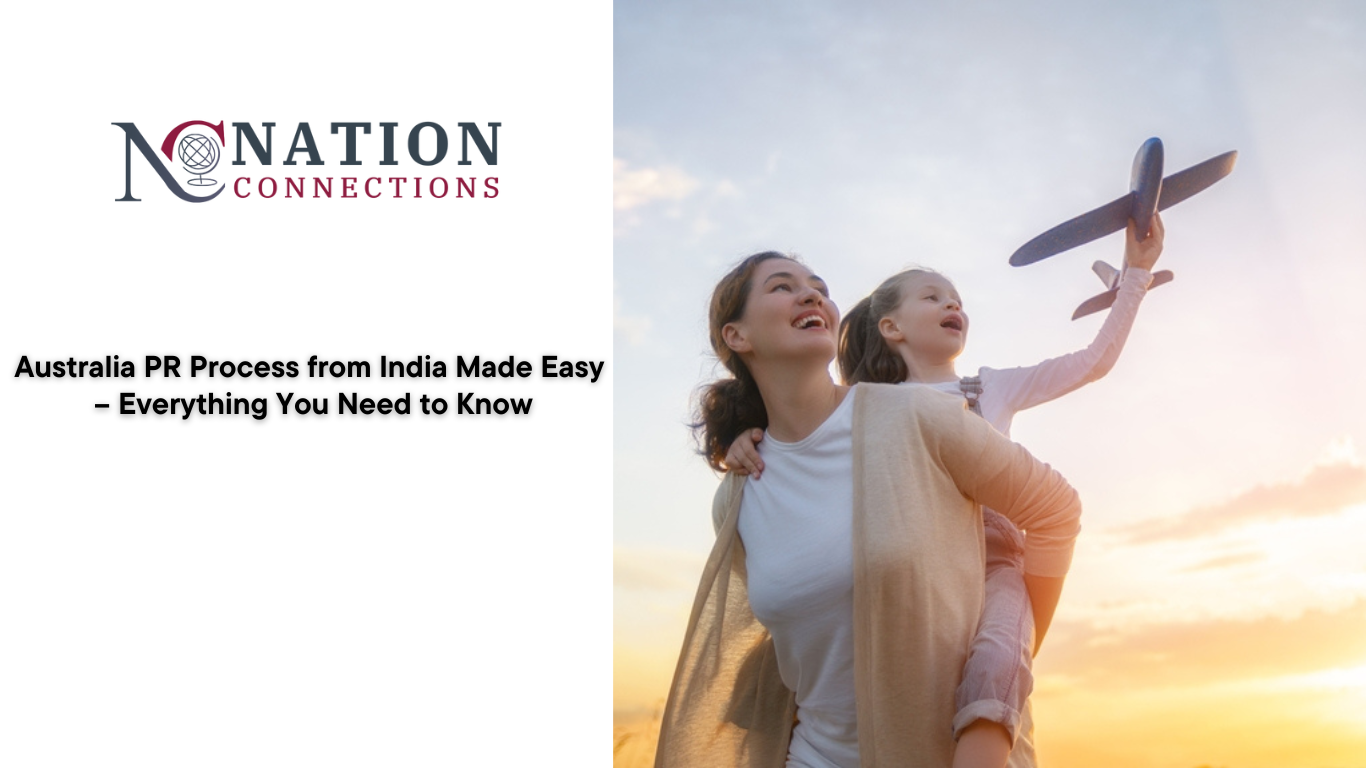Dreaming of a life down under? For many Indians, obtaining Australia PR (Permanent Residency) is a transformational step. It unlocks access to world-class healthcare, education, social security, and a pathway to citizenship—all while enjoying the clean air, thriving job market, and multicultural society that Australia offers.
But navigating the Australia PR process from India can seem daunting: multiple visa subclasses, strict timelines, paperwork complexity. This complete guide demystifies every stage—from eligibility to final grant—so you know exactly what to expect and how to succeed.
Australia PR grants you permanent resident status, allowing you to live, work, and study indefinitely in Australia. While PR is not full citizenship, residents enjoy many privileges:
Work in any state and for most employers
Access to Medicare (public healthcare)
Social security benefits (after waiting periods)
Sponsor eligible family for visas
Travel to/from Australia (with valid travel facility)
However, PR holders cannot vote in federal elections and may need to maintain residency to retain status. Many PR holders later apply for citizenship, which confers full political rights.
To apply successfully from India, you generally must satisfy:
Age: Usually under 45 (some exemptions)
Occupation/Skills: Your profession must be on the relevant skilled occupation list
English proficiency: Required scores in IELTS, PTE, or equivalent
Skills assessment: Validation by the assessing authority (ACS, Engineers Australia, etc.)
Health & character: Medical exams, police clearance
Points threshold: Meeting the minimum points test (currently 65 or more)
Meeting all these is essential; failure in any one can lead to rejection.
Here are some typical routes Indian applicants take:
Skilled Migration (e.g. Subclass 189, 190, 491)
Employer Nomination (e.g. Subclass 186)
State/Territory Sponsorship
Family Stream (sponsoring by spouse, parent)
Most Indians opt for Skilled Independent (189) or State-nominated (190/491) because they don’t require employer sponsorship upfront.
Points-based, politician-independent
No state nomination needed
Best option if you have high points and in-demand occupation
You submit an EOI → await invitation → apply
Requires nomination by an Australian state/territory
Once nominated, you get extra points (5)
Must live/work in the nominating state for a period
Good option if your occupation is on that state’s priority list
For people willing to live in regional areas
Must be nominated by state or sponsored by relative
491 is provisional; after meeting criteria you can apply for 191 (permanent)
Subclass 186: Employer nominates you for permanent PR
Subclass 482: Temporary work visa, can lead to 186 later
Subclass 494: Employer-sponsored regional visa
Advantages: stronger employer backing, often less points pressure
States maintain occupation lists based on local demand
You apply to a state; if accepted, you receive nomination
State criteria might include job offers, local work experience, and residency
Check eligibility against occupation list and points system
Take English test (IELTS, PTE, etc.)
Get Skills Assessment by the relevant authority
Submit Expression of Interest (EOI) in SkillSelect
Receive Invitation to Apply (ITA)
Lodge PR application with documents & fee
Undergo Health & Character checks
Await decision & grant of PR
We’ll dive deeper into each step below.
Common tests: IELTS (Academic/General Training), PTE Academic, TOEFL, OET
Minimum: usually IELTS 6.0 in each band (or equivalent) but higher scores fetch more points
Tip: Practice intensively, use mock tests, focus on weak modules
Different occupations have different assessing bodies (e.g. ACS for IT, Engineers Australia for engineering)
You must submit verified academic transcripts, experience letters, job description, etc.
The assessment body checks your qualifications match Australian standards
You enter details: age, English, work experience, education, nomination preference
Points are calculated
You’re placed into a pool; best scoring applicants get invitations
Issued periodically to highest-scoring EOIs
Once invited, you have 60 days (approx.) to lodge PR application
Form: online application via ImmiAccount
Documents: identity, qualification, experience, test results, nomination letters
Fees: payable at lodgment
Health: full medical check via approved Australian panel doctors
Character: police clearance from India and other countries you lived in
Processing times vary (6 months to over a year)
You can track status via ImmiAccount
On approval, you get visa grant number, date, and travel facility
You can:
Live, work, and study anywhere in Australia
Access Medicare
Sponsor eligible relatives
You cannot:
Vote in federal elections
Hold some high-security government jobs
To retain PR, you need to travel before the travel facility expires (usually 5 years)
After holding PR for 1+ years and fulfilling residence, you can apply for citizenship
Mistakes in documentation (incorrect format, missing pages)
Underestimating the importance of high English scores
Choosing an occupation not in demand
Late submission post ITA
Relying on non-registered agents
Processing: anywhere from 6 to 18 months (depending on visa stream, backlog)
Fees: Application fees can be AUD several thousands depending on visa class
Additional costs: English tests, skills assessment, medicals, translations
Some processing delays due to border closures and catch-up
Occupation lists may shift based on pandemic recovery focus
Governments have introduced priority streams for certain sectors
For example:
Rahul, age 28, Software Engineer
IELTS score: 7.5 (all bands)
5 years experience, good degree
Submits EOI → receives invitation in ~3 rounds → lodges application → PR granted in 9 months
Passport copy
Birth certificate
Academic transcripts & degree certificates
Work experience letters (detailed)
English test score sheet
Skills assessment result
Police clearance certificates
Medical reports (at panel)
Marriage certificate (if applicable)
Identity proofs / photographs
You’ll receive a refusal letter with reasons
You may have review rights / appeal (merits review)
In some cases, you can correct and reapply
Using a registered migration agent:
Pros: guidance, less error, stay updated
Cons: cost, risk of choosing non-reliable agent
DIY:
Pros: cost saving, full control
Cons: risk of mistake, missing updates
If using an agent, ensure they are MARA-registered (Migration Agents Registration Authority) in Australia.
Many Indians first go via:
Student visas
Temporary Skilled Work visas
Bridging visas (after PR application)
These help build local experience and network.
Open Australian bank account
Apply for Tax File Number (TFN)
Get driver’s license
Rent or buy housing
Enroll for Medicare
Join local community groups
Some states offer extra incentives (e.g. bonus points, quicker processing)
Rural areas get more demand; living costs are lower
Australia likely to increasingly favor tech, healthcare, aged care
More weight on regional migration to relieve city congestion
Policy changes might tighten criteria or increase quotas
How many points do I need for Australia PR from India?
You typically need 65 points minimum, but successful candidates often score 80+.
Can my spouse also get PR if I apply?
Yes — spouse can be included in the application and may also be assessed for English, skills, etc.
Do I need work experience to apply for PR?
Yes — most visas require relevant post-qualification work experience (typically 2–5 years).
What happens if my EOI is not invited?
You can wait, improve your score (gain experience, retake English), and resubmit.
Can I change occupation after EOI submission?
No — you must choose an occupation before submitting EOI. Changing it later is difficult.
How long is the PR granted valid for travel?
Typically 5 years for the travel facility; after that, you may need a Resident Return Visa to travel again.
Navigating the Australia PR process from India may seem complex, but with a systematic approach and attention to detail, it’s fully achievable. Start by checking your occupation’s eligibility, securing a strong English score, completing a skills assessment, and submitting your EOI. Then patiently await an invitation, prepare your application carefully, clear health and character requirements, and monitor processing.
With persistence, compliance, and timely action, your dream of moving to Australia and building a new life can become reality. If you want, I can help draft a timeline planner or visa strategy tailored to your profile. Just let me know.




